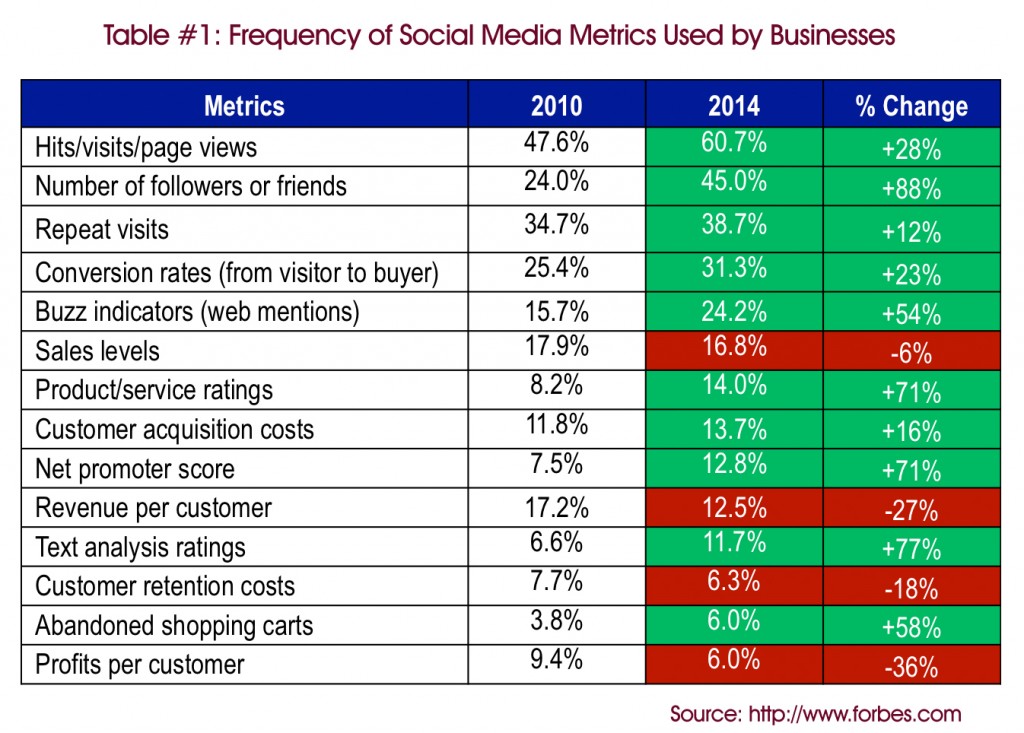Social media is not just another platform for reaching out to customers or targeted audience; it is “the platform” for new and established businesses. The impact of social media marketing on businesses across the World Wide Web is highly growth focused and the good news is that the spending on social media is growing by leaps and bounds. When you think about social media activities and the spending behind it, the obvious question you will face is – what is the ROI of such a marketing campaign? Let’ be a little more precise – is it actually possible to measure the “return on investment” of social media marketing?
Related: 25 Inspirational Twitter Hashtags Every Entrepreneur Should Use.
How Crucial Social Media is Today for Business World
Social Media Metric Used by Businesses
Yes! It is possible to measure the ROI of social media marketing but in order to understand how the entire process works; you need to shift your attention towards the various perspectives of measuring the cost. The first and foremost way is to understand what social media metric is all about and how or why it is being used by businesses.
Social media metrics take into account various indicators related to the marketing process for example: the most commonly used metric is “visit/hits/page views” and it represents the starting point of the marketing funnel, which is brand awareness. At the same time, this metric will not help in calculating client purchases.
The social media metric that has been responsible for highlighting the maximum increases over a period of time is the “engagement metric”. This metric shows information related to several categories of viewers and participants like followers/friends (+80%), buzz indicator (+74%), net promoter score (+61%), product or service ratings (+59%), and so on. There are several other types of analysis that can be considered in the metrics like keyword analysis or sentiment analysis on social media platforms like Facebook, Flickr, Twitter etc.
In order to understand the metrics better, let’s take a look at the following table. The table presents the frequency of social media metrics that have been used by several large and medium sized businesses.
Table1
The above table shows the percentage change in different metrics between 2010 and 2014. For example: the metric “repeat visit” has seen a percentage change of +12% as compared to number of friends or followers, which shows a whopping +88%.
One of the major findings of a research study conducted by MIT, Sloan is that businesses should forget the more traditional ROI. They should not focus on calculating the standard return on the investment and instead should focus on assessing consumer motivations for using social media. This will help managers to measure the various social media investments that are being made by customers especially when they are engaging with a specific brand.
Social Media Objectives – The Primary Focus
The area of primary focus, which most managers are unable to recognize, is the social media objectives. Businesses need to identify the objectives, which are able to explicitly recognize the basic value of operating within the larger social media environment. It has often been the case that managers across organizations emphasize mostly on traditional objectives like direct cost reduction, direct sales, and even increase of market share of the business through social media. Of course, at the end of the day, the outcomes say it all!
The question is – what is the objective of social media and where does the metrics fit in? The answer lies in the following table, which highlights the different social metrics for social media. The table has neatly classified the metrics based on the different social media applications. Although this table is not entirely exhaustive, it will provide a starting point to businesses for measuring the effectiveness of their social media activities.
Table-2
Pitfalls of Social Media Metric – LEVI’S: Case Study
In the summer of 2010, Levi’s, one of the top jeans company in the world launched their new line of jeans. This new line was highlighted as different from regular jeans as it was featuring a new way for sizing jeans. This new way was dependent on the “degree of bodily curve of the woman” wearing the jeans. Levi’s is known to have revealed that it had taken as many as 60,000 body scans of women from across the world. This helped them to come up with several different sizes, which would easily fit 80% of the women across the world. These new sizes were branded as “bold”, “slight”, and “demi” curves.
It did seem like the most innovative idea but their ads trying to communicate this innovative concept ended up angering many and the exchange of emotions took place over social media. Some of the viewers were angered by the slogan in the ad, which was “All asses are not created equal”. This highly provocative tagline along with the fact that the models for the ad were dark skinned made the entire marketing concept sound “racist”. It was all over twitter and by year end, in November 2010, the racist undertones were still being Tweeted about.
This is where businesses can not only measure social media metrics but they need to also have a social media monitoring strategy in place, which will constantly observe and measure consumer sentiment and behaviour.
Strategic Options for Social Media Measurement
At the end of the day, the goal of every business should be to focus on quantifiable metrics. This will help businesses in understanding what is actually working for them and what is not. They can then revise their approach accordingly.
The following image or table is a simple 2 × 2 framework that is based on the assumption that a business has already implemented their social media efforts. Based on this information, the table summarizes the various choices that businesses face while striving to develop their social media strategy. It also suggests the paths that can lead the business towards social media success.
Table-3
If social media activities are developed on the basis of the 4c’s, which are connections, creation, consumption and control then such activities will produce higher ROI as the marketing investments of the business will be able to leverage the customer’s active investments during their engagement with a brand.




